Myrtles Plantation, located in St. Francisville, Louisiana, is renowned as one of America’s most haunted homes. Built in 1796, this 22-room estate features Southern architectural elegance, a grand staircase, and lush gardens. The plantation is steeped in ghostly legends, including the tale of Chloe, an enslaved woman whose spirit is said to roam the grounds, and William Winter, who tragically died on its staircase. Visitors can explore its history, paranormal activity, and timeless charm through guided tours and overnight stays.
The Myrtles Plantation
- 📍 Location: St. Francisville, Louisiana
- 💰 Estimated Price: Not publicly disclosed
- 🏗️ Year Built/Remodeled: Built in 1796; expanded in the mid-1850s
- 🌳 Size of Land: Approximately 10 acres
- 🏠 Size of House: 22 rooms over two floors
- 🛏️ Rooms: 22 rooms, including bedrooms, parlors, dining room, and more
The History and Significance of Myrtles Plantation
Nestled in the picturesque town of St. Francisville, Louisiana, the Myrtles Plantation is a true embodiment of Southern charm and historic elegance. Its iconic façade, framed by towering oak trees draped in Spanish moss, creates a setting straight out of a Gothic novel. Built in 1796, this plantation is more than just a relic of the Antebellum South—it’s a living tapestry of American history.
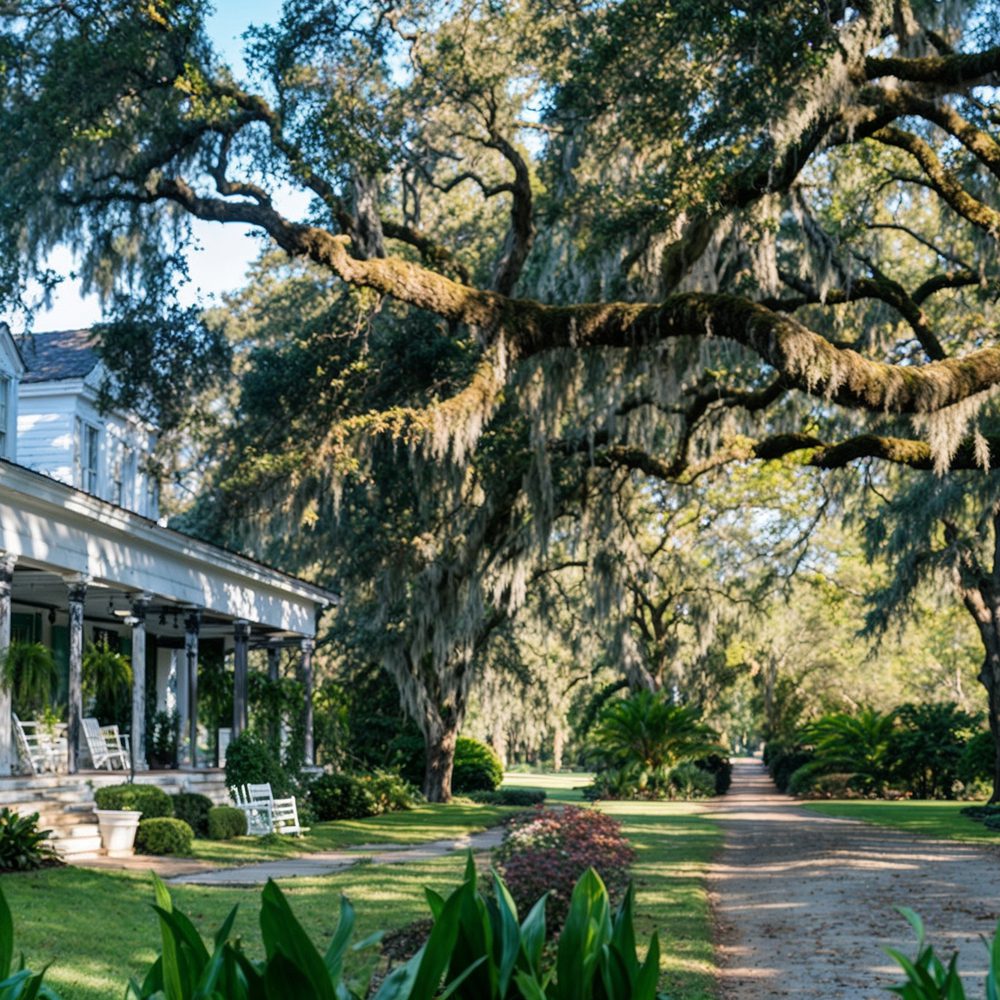
Of course, no mention of the Myrtles Plantation is complete without acknowledging its infamous reputation as one of America’s most haunted homes. Over the years, the estate has become a hotspot for ghost hunters, historians, and curious visitors alike. Who doesn’t love a good ghost story?
The tales surrounding this plantation are as rich as its architecture. From the legend of Chloe, the enslaved woman whose spirit is said to roam the property, to the haunted gilded mirror (featured in the photo above), each story is steeped in mystery and intrigue. Visitors often report eerie experiences, from cold spots to unexplained reflections and shadowy figures in the mirror.
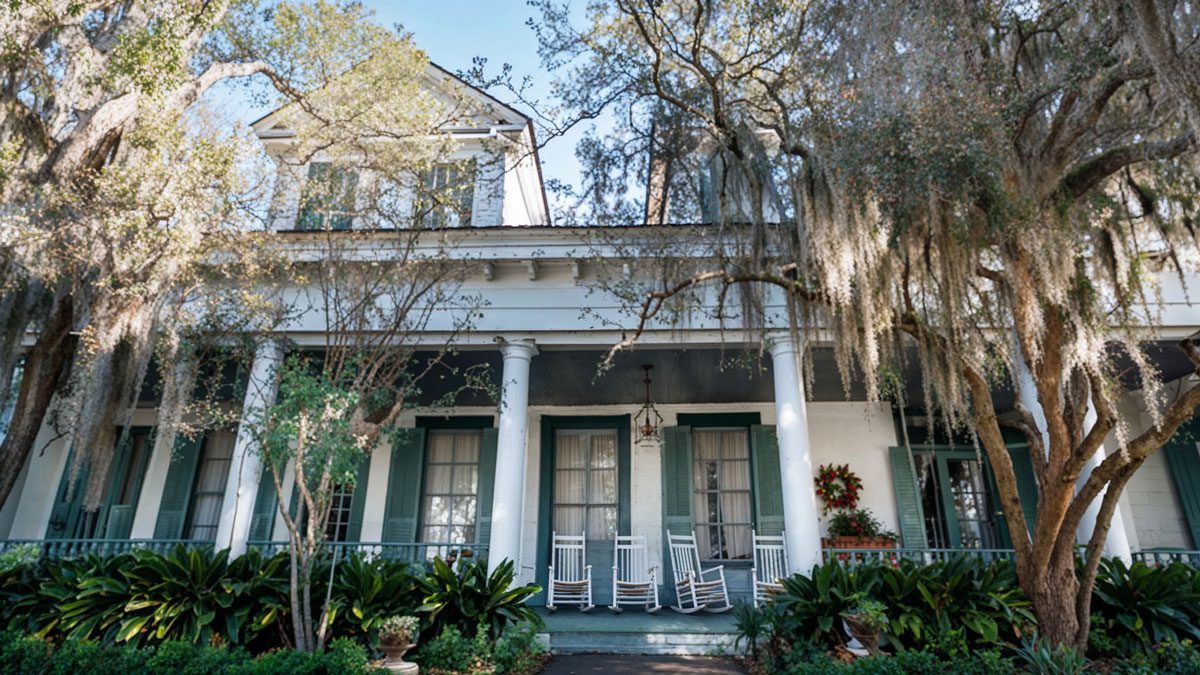
Chloe’s Legend: The Infamous Tale of the Enslaved Woman
One of the most enduring legends of Myrtles Plantation revolves around Chloe, an enslaved woman whose story has become the cornerstone of its haunted reputation. According to the tale, Chloe was punished by her master, Clarke Woodruff, for eavesdropping. In retaliation—or perhaps in desperation—she allegedly poisoned a birthday cake, leading to the tragic deaths of Sara Woodruff and her two children.
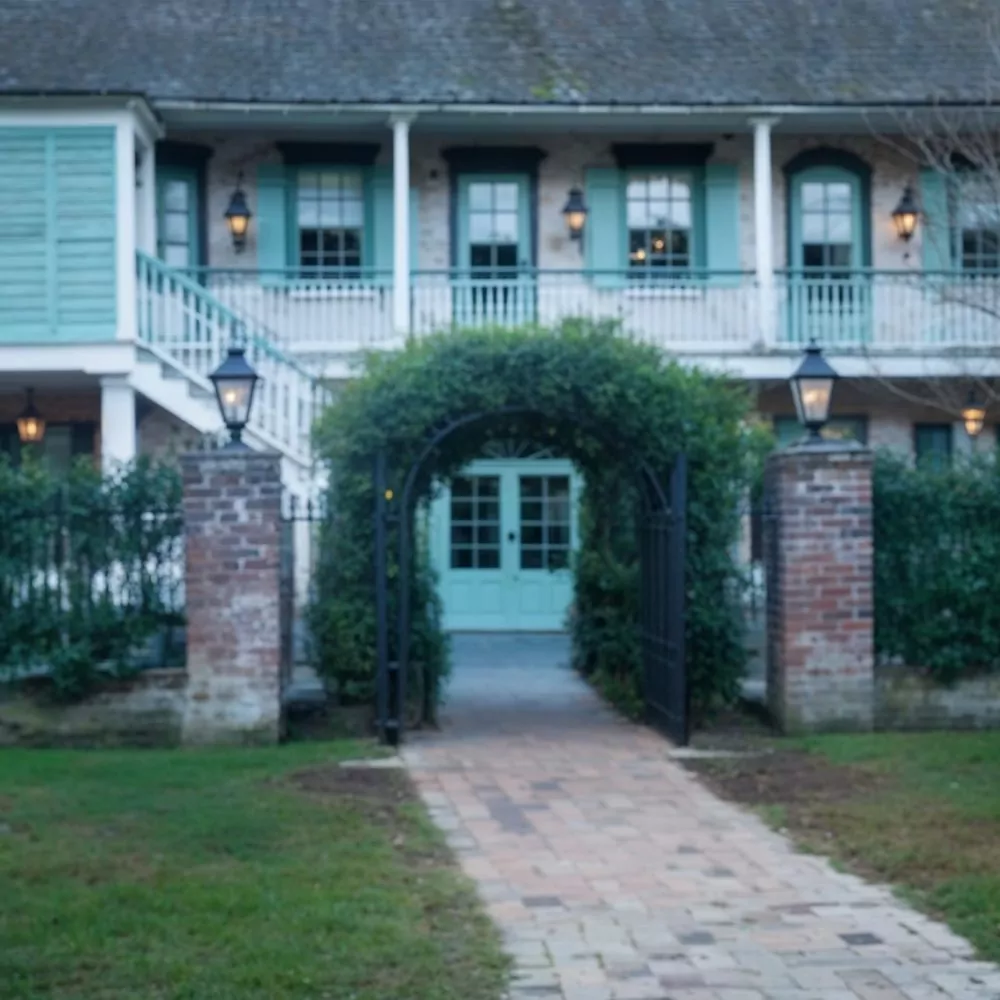
But was Chloe’s story true? Historical records suggest that much of the legend may be embellished or even fabricated. For instance, there is no documented evidence of Sara or her children dying from poisoning. Yet, the power of Chloe’s narrative persists, fueled by reports of a ghostly figure wearing a green turban wandering the plantation grounds.
Visitors often claim to see her silhouette near the rear gardens, or feel a distinct chill when passing by areas linked to her tale. Whether Chloe is a historical figure or a myth, her story has left an indelible mark on the plantation’s lore.
William Winter’s Tragic End – The Grand Entrance Hall
If Chloe’s legend haunts the grounds, then William Winter’s story reverberates within the walls of the plantation itself. Winter, a former owner of Myrtles Plantation, met a violent end when he was shot on the front porch by an unknown assailant in 1871. Legend says that after being mortally wounded, Winter staggered into the house and collapsed on the 17th step of the grand staircase.
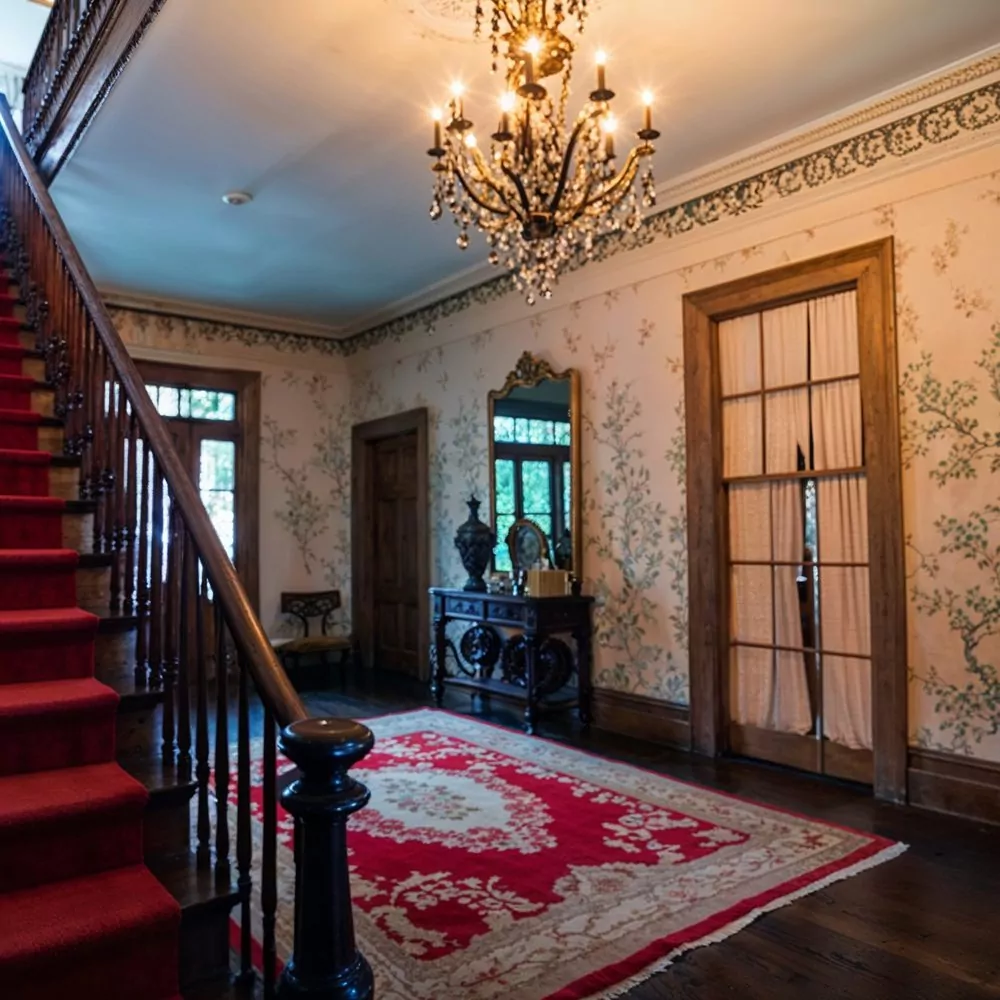
This dramatic death has made the staircase a focal point of ghostly activity. Guests frequently report hearing phantom footsteps ascending or descending the stairs, even when no one is present. Some visitors claim to feel a strange weight or presence as they climb the stairs themselves, as though retracing Winter’s final, fateful moments.
The Haunted Mirror and Other Lingering Spirits
Few artifacts in Myrtles Plantation are as infamous—or as unsettling—as the gilded mirror in the grand entrance hall. This antique piece, with its ornately carved golden frame, is rumored to house the spirits of Sara Woodruff and her children. Visitors often report seeing handprints or ghostly faces appear on the glass, only to watch them fade away as if they were never there.
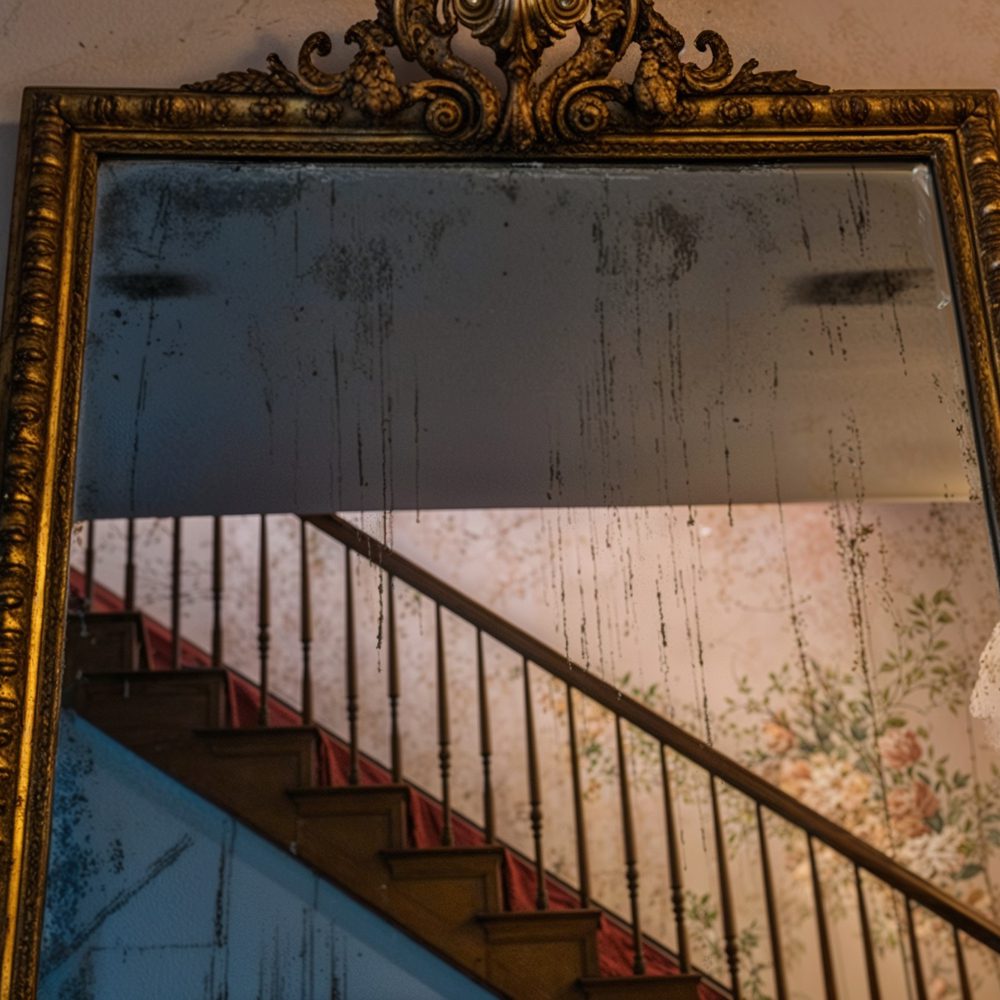
Beyond the mirror, countless other ghostly encounters have been reported throughout the plantation. Unexplained noises—from muffled voices to sudden bangs—are a common occurrence. Visitors have also described seeing shadowy figures that vanish as quickly as they appear, leaving behind an eerie sense of being watched.
The Front Veranda and Courtyard
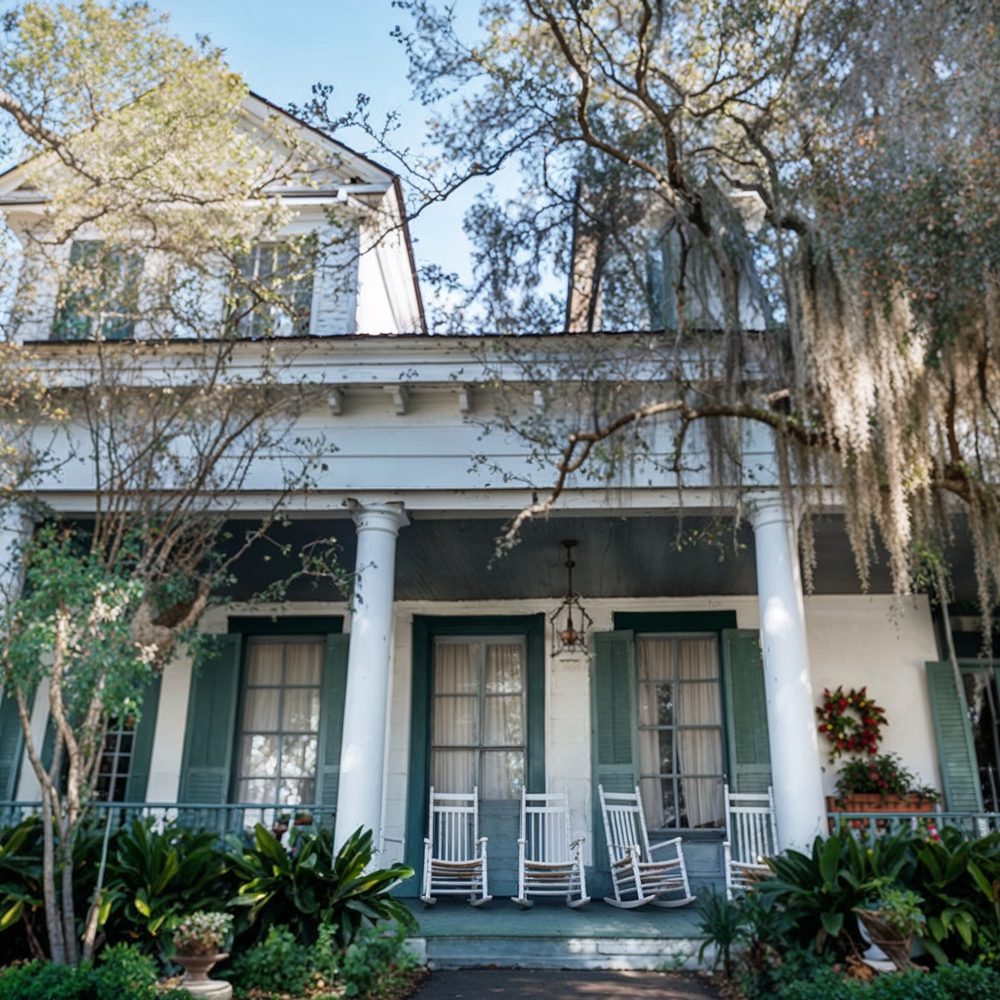
The front veranda of Myrtles Plantation is as iconic as it is serene, featuring a row of white rocking chairs under the shade of towering oak trees. While the porch exudes Southern charm by day, it takes on a more chilling character by night. Visitors have reported seeing ghostly figures seated in the rocking chairs or pacing the veranda as if waiting for someone—or something.
The courtyard, bordered by brick pathways and framed by carefully tended hedges, offers a tranquil space that belies its haunted reputation. Yet, some guests claim to hear faint voices or see fleeting shadows among the hedges.
The Dining Room
The dining room of Myrtles Plantation is a testament to Southern elegance, designed for lavish dinner parties and formal gatherings. At the center of the room is a long wooden dining table, its glossy surface reflecting the light of a stunning crystal chandelier. The table is impeccably set with silver serving dishes, polished candelabras, and delicate china, each piece echoing the grandeur of a bygone era.
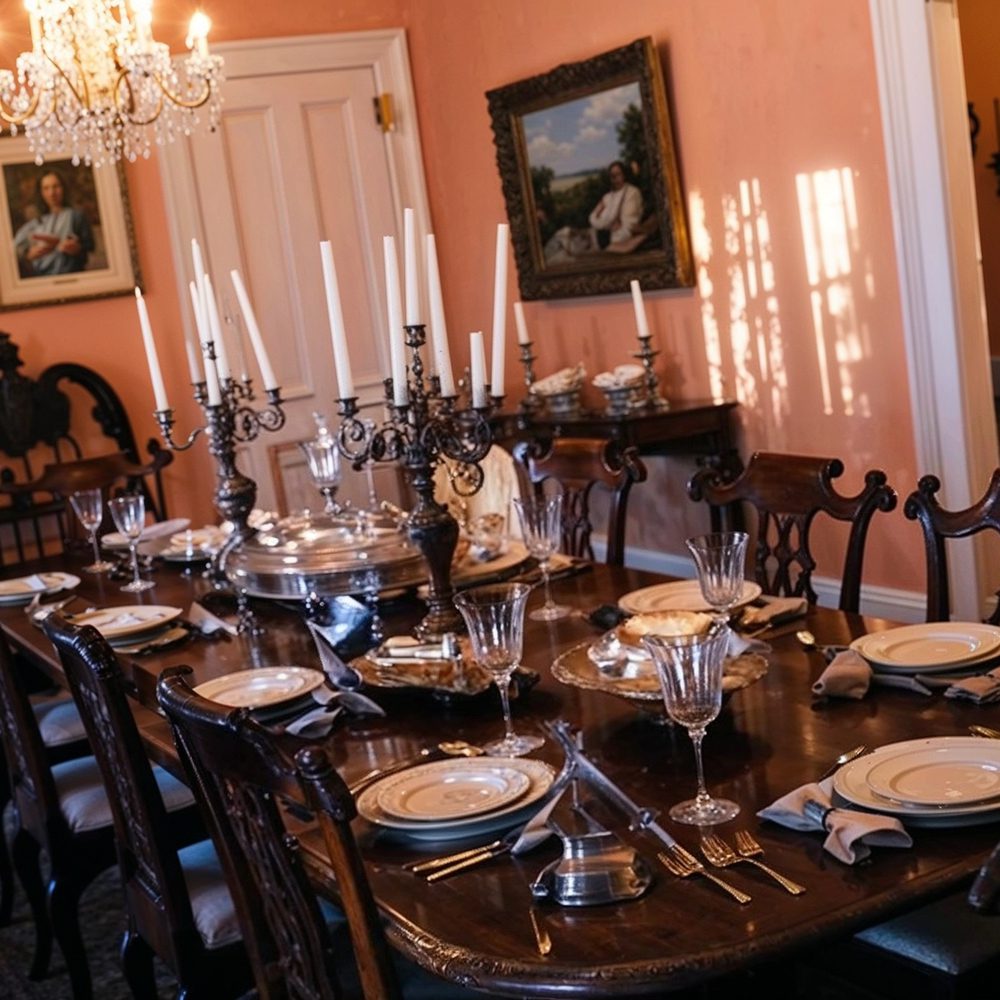
The room is surrounded by intricately carved chairs, their dark wood frames contrasting beautifully with the warm peach-colored walls. The white trim and crown molding add a touch of refinement, drawing attention to the carefully chosen artwork that adorns the walls.
But the dining room isn’t without its share of ghostly lore. Guests have reported hearing the sound of muffled conversations and clinking glasses, even when the room was empty. Could these phantom dinner parties be echoes of the past, or is there something—or someone—still lingering here?
The Parlor Rooms
The parlor rooms at Myrtles Plantation are where history and mystery converge in perfect harmony. Each room is decorated with richly upholstered furniture in shades of red, green, and gold, exuding a sense of Victorian luxury. The heavy drapery frames tall windows, allowing just enough sunlight to create a warm, inviting glow.
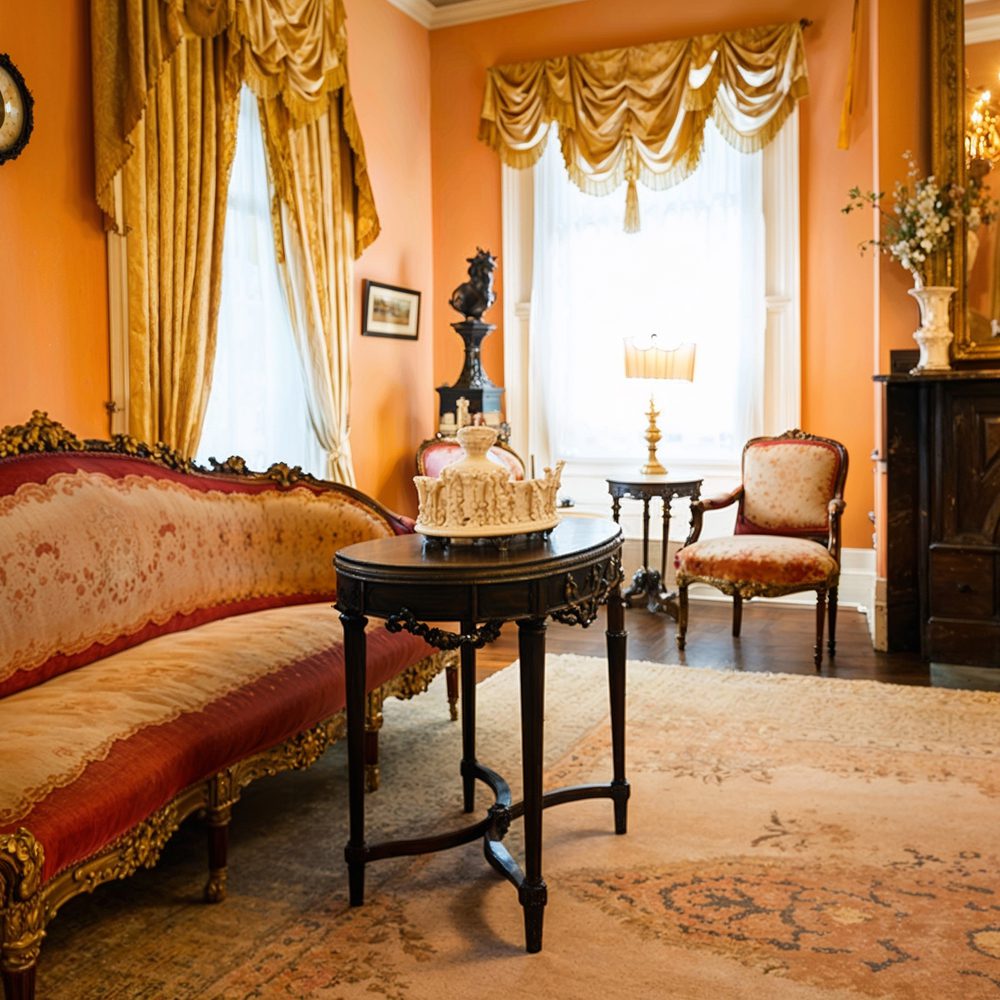
Unique features include ornate marble fireplaces, their mantels adorned with carved angel statues and antique clocks. Above each fireplace hangs a gilded mirror, its surface reflecting the intricate details of the room while adding an element of mystery.
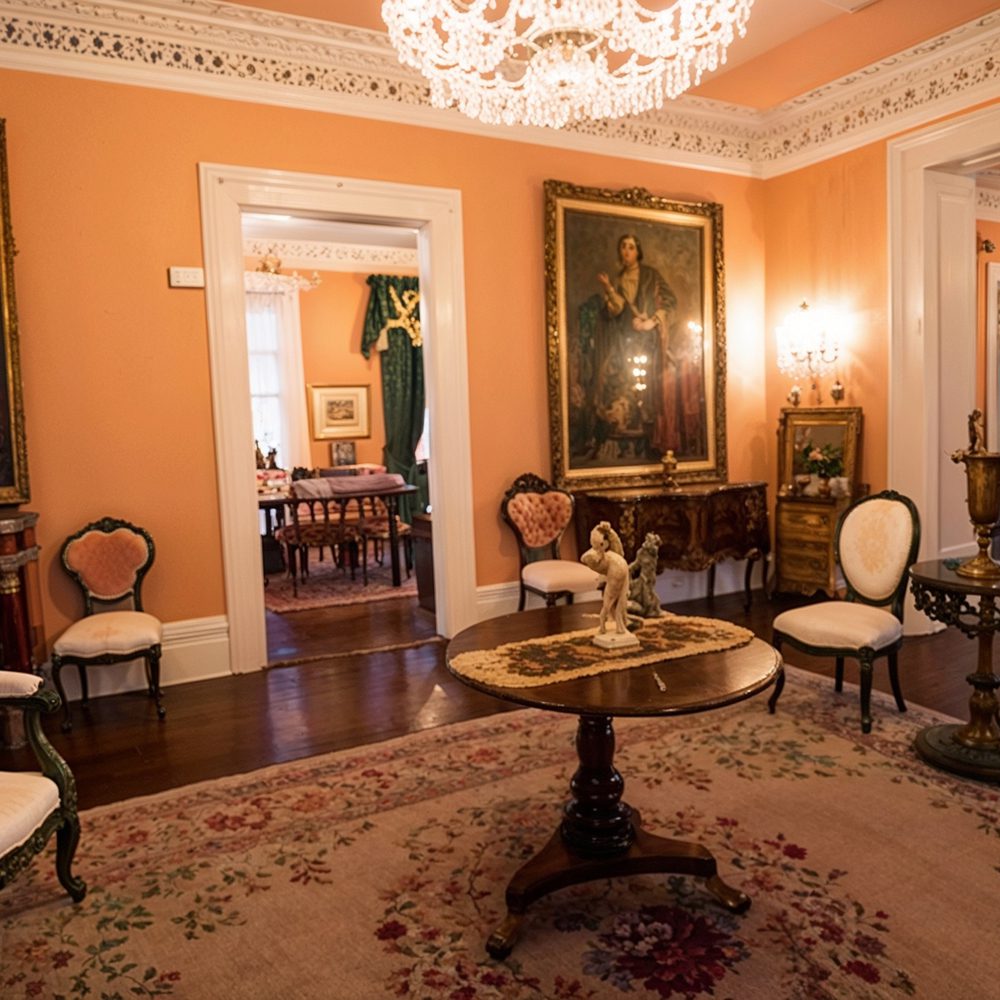
Guests often share accounts of seeing ghostly figures seated on the sofas, their presence felt more than seen. Others have reported hearing faint whispers late at night, as though the spirits of former residents are still engaged in quiet conversation. The ambiance is equal parts elegance and intrigue, making these rooms unforgettable for every visitor.
The Windows
The fleur-de-lis-patterned windows at Myrtles Plantation are an architectural gem. Each pane is adorned with delicate golden motifs, filtering sunlight into a kaleidoscope of glowing patterns that dance across the floors. The windows, slightly aged and weathered, add a sense of timelessness to the rooms they adorn.

At night, however, these windows take on a more mysterious quality. Guests have reported seeing faces or figures peering back at them, even when no one is outside. This combination of beauty and the unexplained makes the windows a standout feature of the plantation’s interior.
Where does Morgan Moss, the owner of Myrtles Plantation, live now?
Morgan Moss, the current owner of Myrtles Plantation, resides on the property itself. He grew up there after his parents, Teeta and John Moss, purchased the plantation in 1992, and he continues to live and manage the estate.
What is the address of Myrtles Plantation?
The Myrtles Plantation is located at 7747 U.S. Highway 61, St. Francisville, Louisiana, 70775. This historic site is approximately 30 miles north of Baton Rouge.
How much is Myrtles Plantation worth?
The current market value of Myrtles Plantation is not publicly disclosed. As a historic property and popular tourist attraction, its value would be influenced by factors such as its historical significance, condition, and revenue from tourism.
Can visitors stay overnight at Myrtles Plantation?
Yes, visitors can stay overnight at Myrtles Plantation. The estate operates as a bed and breakfast, offering accommodations in the main house and surrounding cottages, allowing guests to experience its historic charm firsthand.
Are there guided tours available at Myrtles Plantation?
Yes, Myrtles Plantation offers guided tours to the public. These tours provide insights into the plantation’s history, architecture, and the various legends associated with its haunted reputation.
Conclusion
The Myrtles Plantation is a place where history and the supernatural collide. Its stunning architecture, from the grand staircase to the rocking-chair veranda, tells a story of Southern elegance. At the same time, its ghostly legends—from Chloe’s tragic tale to the haunted mirror—keep visitors coming back, eager to experience its mysteries firsthand.
Exclusive Commentary: Behind the Scenes at Myrtles Plantation

